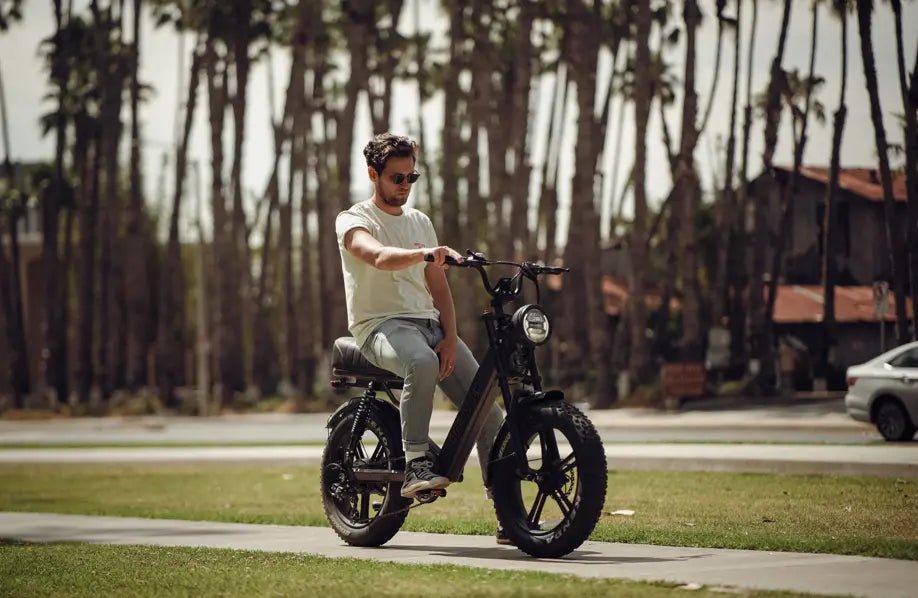E-biking has really picked up on being one of the favorite modes of commuting and leisurely activities among city commuters and eco-conscious individuals. Riding an e-bike imparts numerous health benefits, whether it be while commuting in city traffic or on scenic ridings. However, the real key is to be able to ride again another day; that means post-ride recovery is crucial. This blog aims to take e-bikers through some of the effective post-ride recovery strategies.
Importance of Post-Recovery from Riding E-Bike
Importance of post-recovery from riding e-bikes is that it will help to reduce injuries and prepare the body for the next ride. The muscles need time to relax and recover after spending a long hour riding. Overlooking the recovery process might result in muscle fatigue, aching or even more severe injuries. This is very crucial for an urban cyclist who wants to feel good the whole week while using his or her e-bike on a daily basis.
Hydrate
A certain level of proper hydration is possible right after an e-bike ride. The body loses fluids during cycling mainly through the process of sweating, most particularly on warmer days. Recovering lost fluids is essential to muscle recovery, performance, and good health. Hydrated bodies have the ability to maintain body temperature, facilitate nutrient transportation, and sustain body metabolic activity. Choose water or an electrolyte-fortified sports drink because these potentially return your body to normal more quickly. Try to ingest a minimum of between 16-24 ounces of fluids right after riding to jump-start your rehydration.
Stretch It Out
Stretch is necessary when it comes to after-ride treatment, involving muscle relaxation and increased flexibility through diminishing the possibilities of injury. After you get off your e-bike, spend 10-15 minutes stretching your main muscles; pay attention to the calves, thighs, hamstrings, and lower back, as these parts of your body get stressed the most while you ride. Perform some gentle yoga poses, such as standing forward bend, cat and cow, wide-legged forward bend, and happy baby, to relax the muscles and open them up. Allow the body to relax, which will promote circulation all over to reduce tightness of the muscles.
To recover properly and to rebuild, your body will need the appropriate nutrients supplied to it. You should consume a well-balanced meal within two hours after your ride. Try to include a good mixture of proteins, carbohydrates, and healthy/friendly fats in your post-ride meal. Proteins will help repair muscles, while carbohydrates restore energy storage.
Ice Baths and Cold Showers
Cold therapy is incredibly effective for decreasing post-ride muscle inflammation and soreness. Submerge yourself in a cold shower or ice bath for 10-15 minutes; it will lead to vasoconstriction, decreased swelling, and the numbness of soreness so you can recover more quickly. This might still be somewhat painful, but the large benefit toward your muscles—it will make it worth it. Adding a few moments of contrasting heat and cold can further enhance recovery; some athletes have found this.
Use a Foam Roller
Foam rolling is a great form of self-myofascial release. It relieves muscle tightness and enhances blood flow all over the body. Roll out the quads, hamstrings, calves, and back for 5-10 minutes to break up adhesions and promote good blood flow. This practice will help break up scar tissue and promote muscle recovery so you can hit your e-bike the very next day, refreshed and ready to ride.
Prioritize Rest and Recovery
Sleep is the time when most of the body's repair work is done; hence, it's quite important for recovery. Make sure that you get at least 7-9 hours of sleep each night to allow your muscles enough time to recover and fill you with energy. Set up a pre-sleep routine that lets your body know it's time to go to bed, whether it's reading, having a warm bath, or doing some light stretches. Try to avoid screens for at least one hour before sleeping and make sure it is cool, dark, and as comfortable as possible for sleeping.
Listen to Your Body
Heed how you feel after a ride. If you are persistent in your pain or discomfort, that may mean you need more rest or you're pushing yourself too hard. Take a day off of riding if you must; your body will thank you in the long run. It's listening to those signals from your body that can avoid you getting hurt and continue the sport on a long-term basis, which will enable you to ride for years to come.
Add Active Recovery
Active recovery is some light activity that warms up the blood flow without stressing oneself too much. Light walking, cycling, or easy swimming keeps the muscles active while recovering. Do this for 20 to 30 minutes off the bike to keep your body moving, blood flowing better, and muscles less tight—so your next ride isn't too painful.
Keep Your Recovery Routine on Track
Recovery needs to be consistent. If you are riding regularly on your e-bike, then recovery also becomes regularity. The more consistent you are in this discipline, the better your body will respond to it. You will get better performance and fewer injuries. Think about your recovery routine as an investment in your future rides that will enable you to enjoy cycling even more.
Mental Recovery Matters Too
Cycling is a sport that deals not only with the physical aspect but also with the mental. Allow some time to unwind and relax your mind, just like recovery time. Do some mindfulness, meditation, or simple deep breathing to destress and free your mind after your ride. Other activities that help relax your mind, such as reading and spending time in nature, will also help in the recovery process. This will sharpen your mind, and the peace of mind and being focused will enrich your cycling experience and recovery, making each ride a joy and satisfaction.









Leave a comment
All comments are moderated before being published.
This site is protected by hCaptcha and the hCaptcha Privacy Policy and Terms of Service apply.